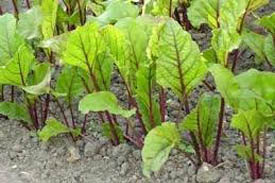Gardening: Strawberries II
Last year in the first article on strawberries, we started with Ozark Strawberries in an all-organic bed inside the small Growhaus. Since it was covered there was a longer season with warmer temperatures. Did you note how the mother plant sends out daughter plants on long stems to take root and start anew?
A gardener has to be careful with this delicacy as they may be under attack by insects such as the leaf and strawberry root aphids, which presents a problem in transmitting a virus from old and infected plants. If you prune out old plants that have become unproductive you will have no problem.
Ants carry about the root aphid. If you sit and observe this movement of ants carrying aphids about, you need to backtrack along the ant’s path and dig them out.
The strawberry clown mite, also called the cyclamen mite, is active in cool weather and feeds on the buds of the plant causing blotched and distorted blossoms. If you use chemical pesticides you will certainly kill off the natural predators and continue to have this problem. To check if you have these mites place a piece of paper under the blossoms and shake the blossoms. The mites look like tiny grains of salt. Natural predators are: ladybugs, lacewings and friendly predacious mites. The natural predators may be purchased from growers supply, but wait and see if you can strike up a natural balance as long as there is no chemical sprays present.
Once a year, in late June the Root Weevil may emerge to lay their eggs. Little beetles will grow inside the strawberry bud and arrive on your desert plate. Plants become stunted; leaves bunch together and the roots and crowns are eaten away. The adult beetle is about a ¼” long, black snouted, and almost severs the unopened buds leaving them hanging by a thread. Although they can be hand picked, the introduction of the caterpillar nematode from various commercial suppliers is a favorite in the industry.
Of course there are good nematodes and there are bad nematodes. These almost microscopic eel-like creatures that bother your precious strawberries will produce root knot and root lesions, galls and swellings-reducing your yield.
The bad nematodes prefer NON-organic soil, and the good nematodes prefer ORGANIC soil. If you have a rich organic soil and mulch you will have few if any problems.
The application of the Big Mexican Marigold will do away with nematode problems too, and even the workhorse of the garden, regular marigolds are a vast help. In the fall gather the marigolds up, blenderize them, make slurry, put it in the refrigerator and use it to pour on hot spots next spring. (Diane would fuss at me so that is why I have my own gardener’s refrigerator.)
To start additional beds from the first bed daughter plants make sure the crown borer is not present. You will also want to move the new bed some 300 yards from the original site and make the transplants in early February or March before the little grubs become an adult and lays more eggs. Wild strawberries will harbor this pest. No wild strawberries. The adults feed on the stems and leaves, but the grubs do the most damage through the summer months. The adult is a row beetle 1/5” long with reddish patches on the wings. Healthy plants in a rich organic medimum resist this pest.
Leaf rollers make a neat roll of a leaf to protect themselves against insect poisons. Again, this is why so many commercial growers have gone organic. The leaf roller, a small reddish moth, lay eggs under the strawberry leaves. The larvae make a web pulling the leaf around them and commence eating.
I will interject at this point with moths and fliers problems I have found that toads do the job of keeping them in check. I collect toads and use them in my Solar Greenhouse and outside. More on this subject, maybe in our next article.
The strawberry white fly- is my bane. I have had some success with using oak leaf smoke. With the enclosed tunnels, you viewed in the Growhaus series, you will see from these former article photographs it is easy to use my bee smoker and choke them out.
This year I am grinding up Caladiums and oak leaves to smoke them. We have to keep experimenting. The main focus is healthy plants and that means organic healthy soils and earthworms. The small baby earthworms are surfacing and looking for food. Sprinkle some cornmeal, or better yet-bunny berries.
Enjoy the summer munching, as a ripe homegrown berry beats the chemical ripened ones all hollow.
COPYRIGHT: 2009, Back2theLand, Mark Steel



